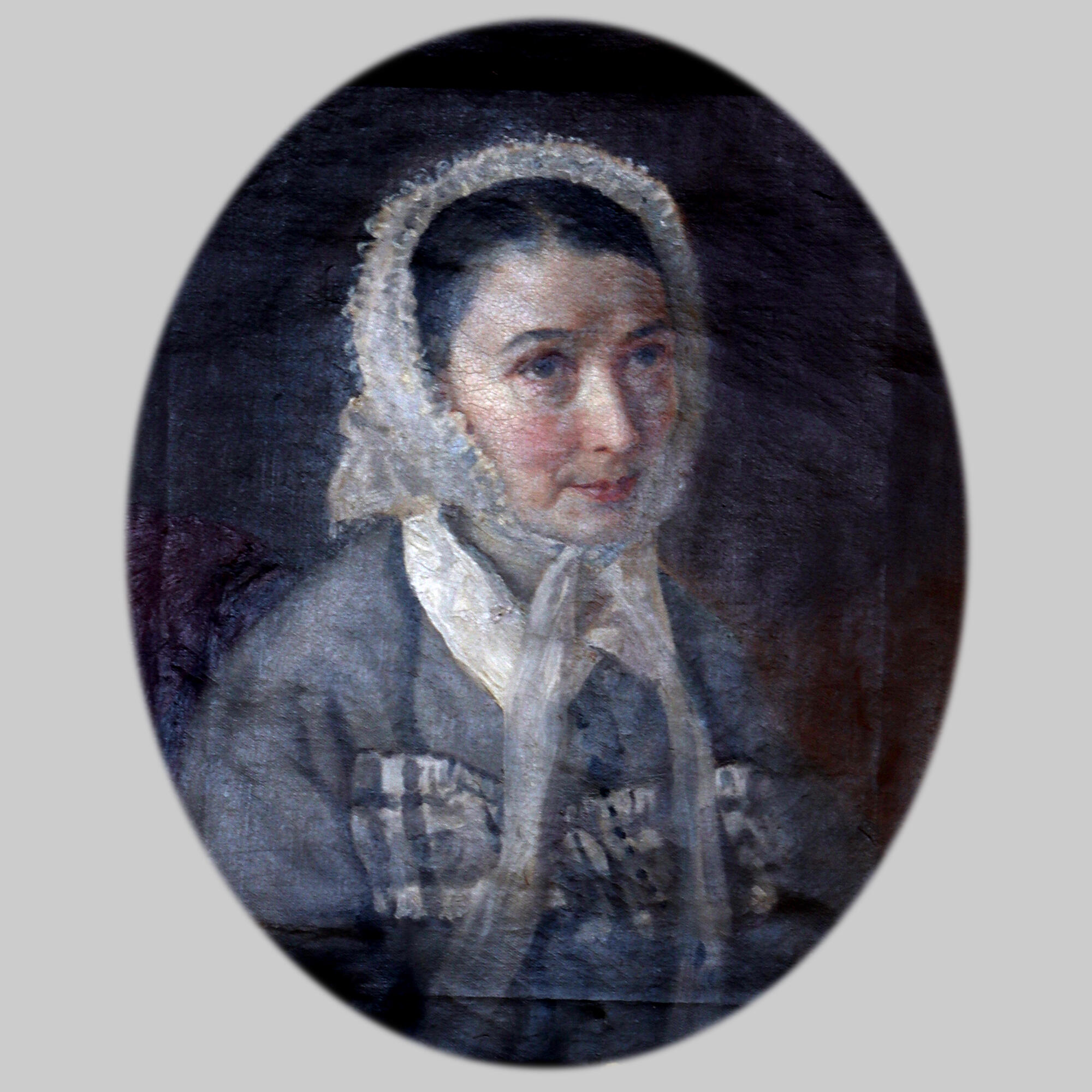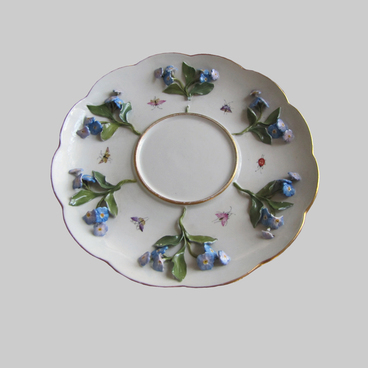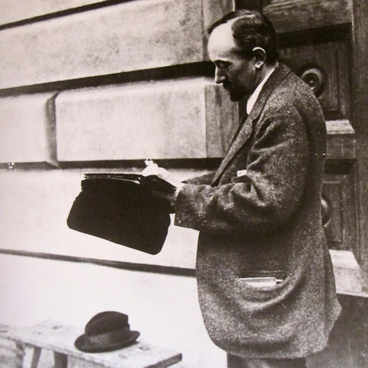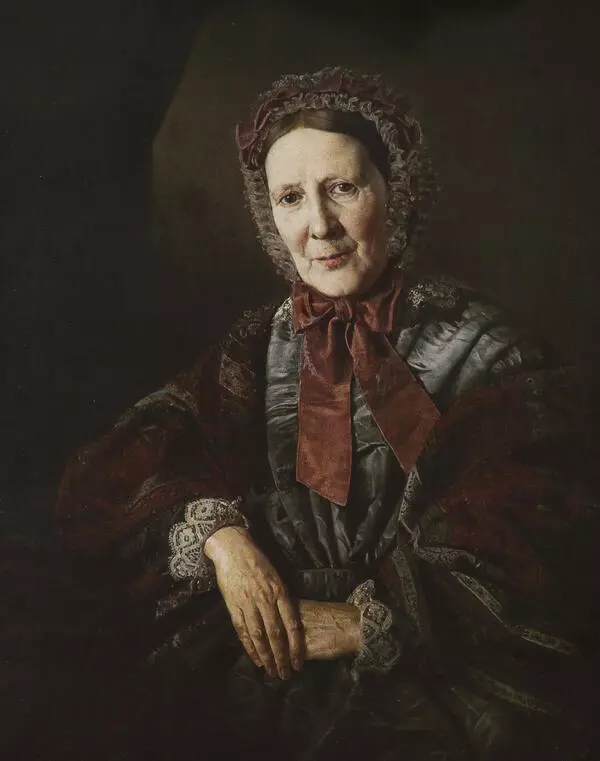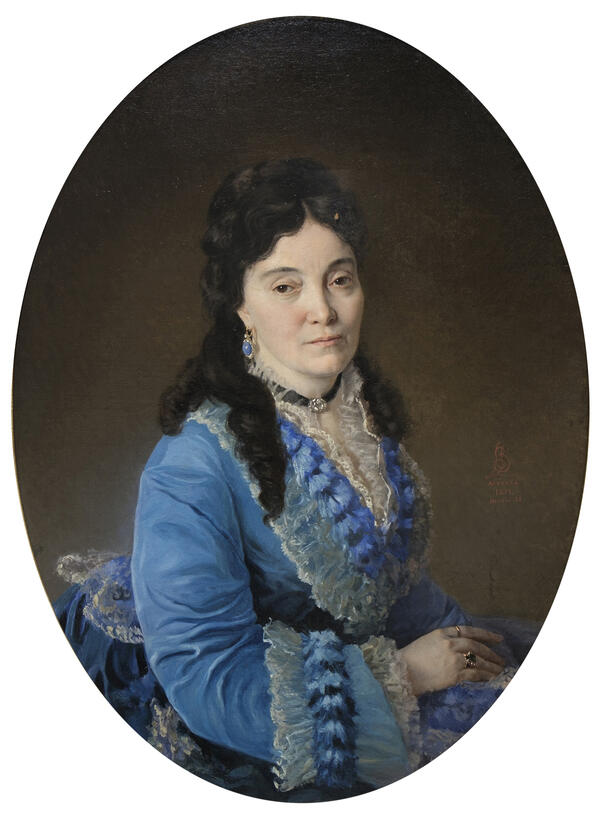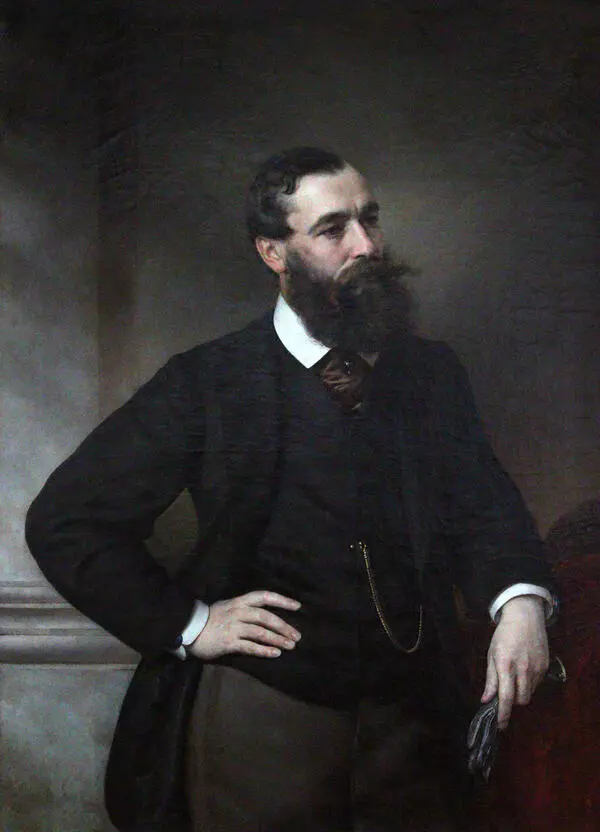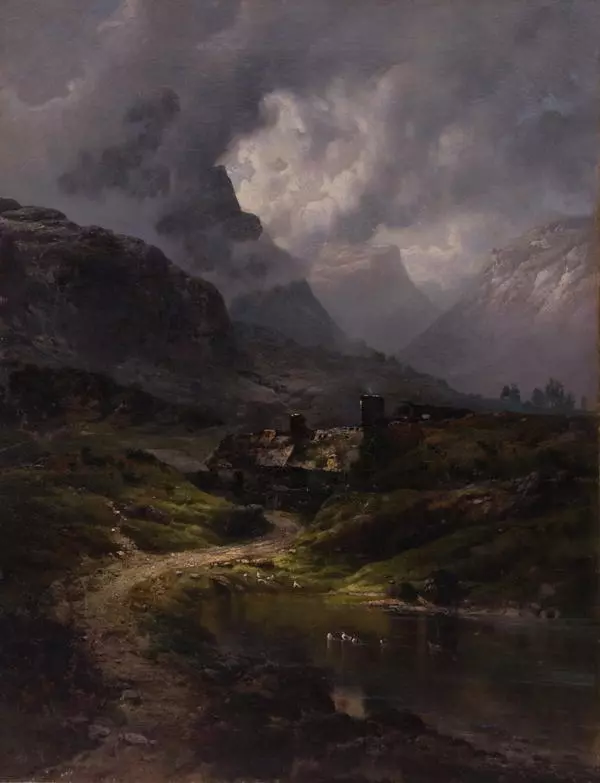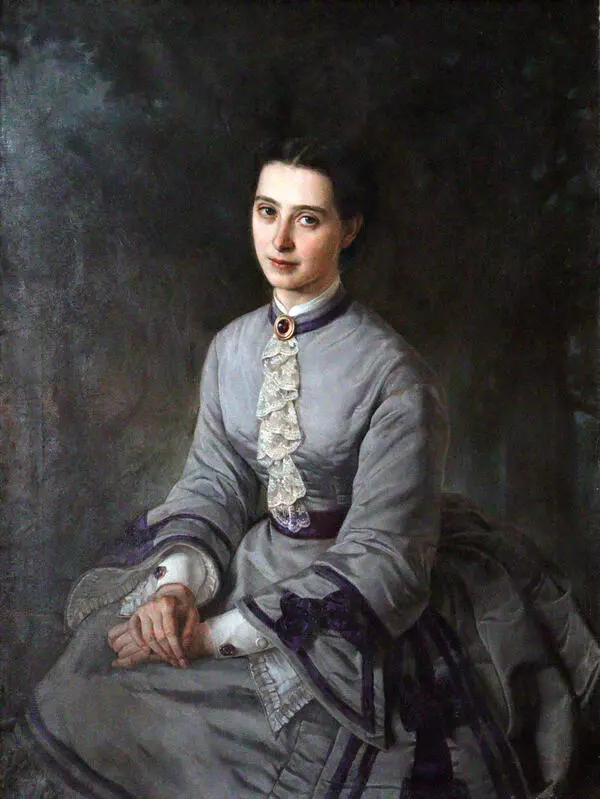Ekaterina Khvoshchinskaya, married Chicherina, was the mother of a Russian lawyer, philosopher, historian, publicist and teacher Boris Chicherin. For a long time, this portrait by Vladimir Sherwood was considered a painting of her daughter-in-law, Alexandra Kapnist.
Ekaterina Khvoshchinskaya came from the ancient columnar nobility. In 1827, she married Nikolay Chicherin, a warrant officer of the Pereyaslavsky horse-jaeger regiment, a retired lieutenant. They had 8 children in marriage.
Ekaterina Chicherina was a religious woman, which affected her eldest son, Boris Chicherin, who even wrote the book ‘Science and Religion’ in his mature years. She insisted that he not be sent to school, and he received a purely home education.
The version that the painting depicts the mother, and not the wife of the famous lawyer, was put forward by employees of the House-Museum of G.V. Chicherin. They noticed that in the old photograph of 1914, the portrait was draped with a cloth and hardly represented the then guardian of the Karaul estate, Aleksandra Chicherina.
The work itself is uneven in painting. The dress, the back of the chair, the background are painted rather casually and seem to be unfinished. At the same time, Vladimir Sherwood skillfully depicted a beautiful youthful face with a slight blush and a serene, calm gaze directed into space.
The model’s frozen gaze, similar to the gaze of a blind person, attracts attention - Ekaterina Khvoshchinskaya went blind in the last years of her life. However, to the right of the viewer on the canvas, next to his monogram, the author also set the date - 1857. Meanwhile, according to Boris Chicherin, his mother went blind immediately after her father’s death in 1860. Consequently, the artist could not depict her blind, but he guessed in the woman’s motionless gaze signs of a future loss of vision.
Judging by the date, Vladimir Sherwood painted the portrait during the period of graduation from the Moscow School of Painting and Sculpture, from which he graduated in the same 1857, receiving the title of “free artist of landscape painting.” The painting is one of the earliest works of the master, who left a noticeable mark in the history of Russian fine art.
Ekaterina Khvoshchinskaya came from the ancient columnar nobility. In 1827, she married Nikolay Chicherin, a warrant officer of the Pereyaslavsky horse-jaeger regiment, a retired lieutenant. They had 8 children in marriage.
Ekaterina Chicherina was a religious woman, which affected her eldest son, Boris Chicherin, who even wrote the book ‘Science and Religion’ in his mature years. She insisted that he not be sent to school, and he received a purely home education.
The version that the painting depicts the mother, and not the wife of the famous lawyer, was put forward by employees of the House-Museum of G.V. Chicherin. They noticed that in the old photograph of 1914, the portrait was draped with a cloth and hardly represented the then guardian of the Karaul estate, Aleksandra Chicherina.
The work itself is uneven in painting. The dress, the back of the chair, the background are painted rather casually and seem to be unfinished. At the same time, Vladimir Sherwood skillfully depicted a beautiful youthful face with a slight blush and a serene, calm gaze directed into space.
The model’s frozen gaze, similar to the gaze of a blind person, attracts attention - Ekaterina Khvoshchinskaya went blind in the last years of her life. However, to the right of the viewer on the canvas, next to his monogram, the author also set the date - 1857. Meanwhile, according to Boris Chicherin, his mother went blind immediately after her father’s death in 1860. Consequently, the artist could not depict her blind, but he guessed in the woman’s motionless gaze signs of a future loss of vision.
Judging by the date, Vladimir Sherwood painted the portrait during the period of graduation from the Moscow School of Painting and Sculpture, from which he graduated in the same 1857, receiving the title of “free artist of landscape painting.” The painting is one of the earliest works of the master, who left a noticeable mark in the history of Russian fine art.
